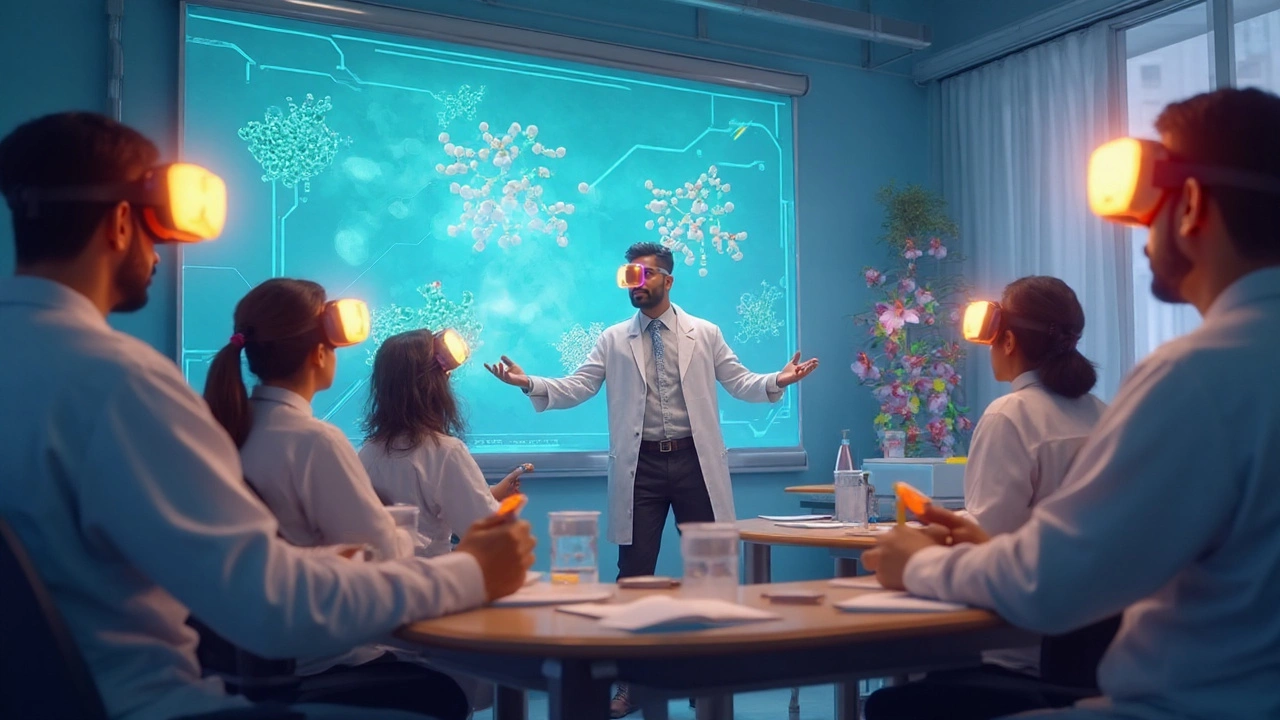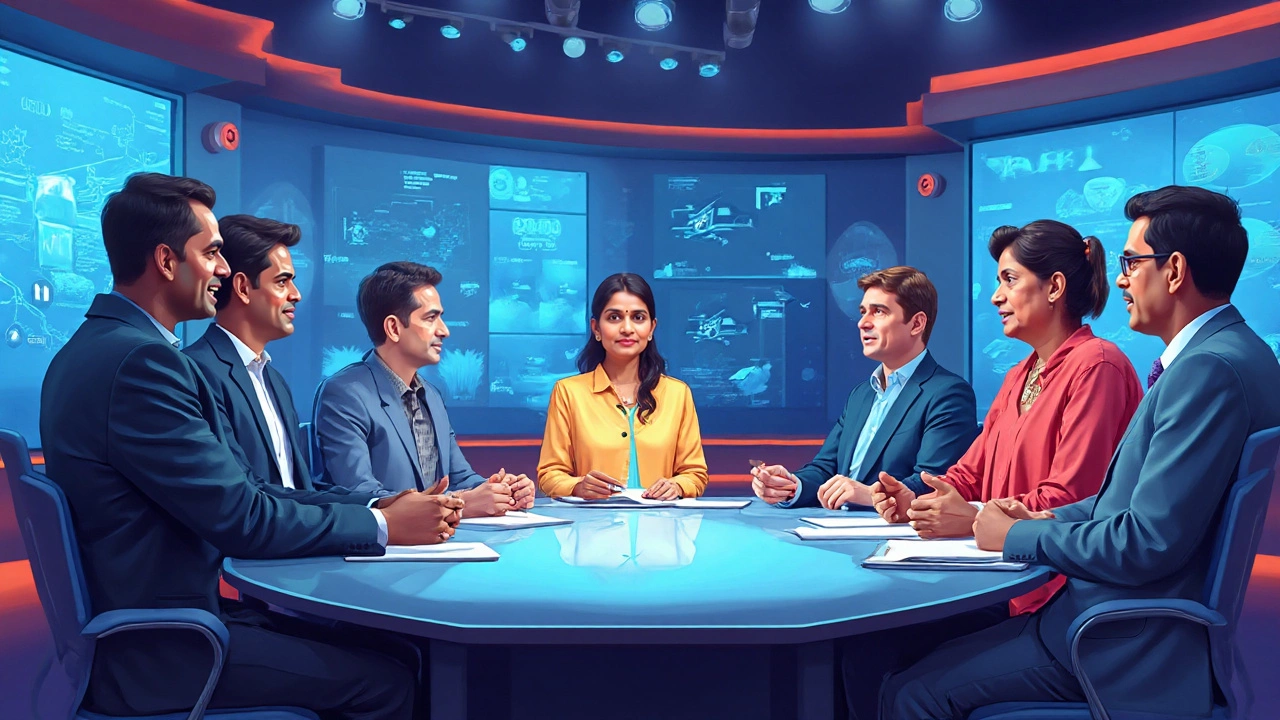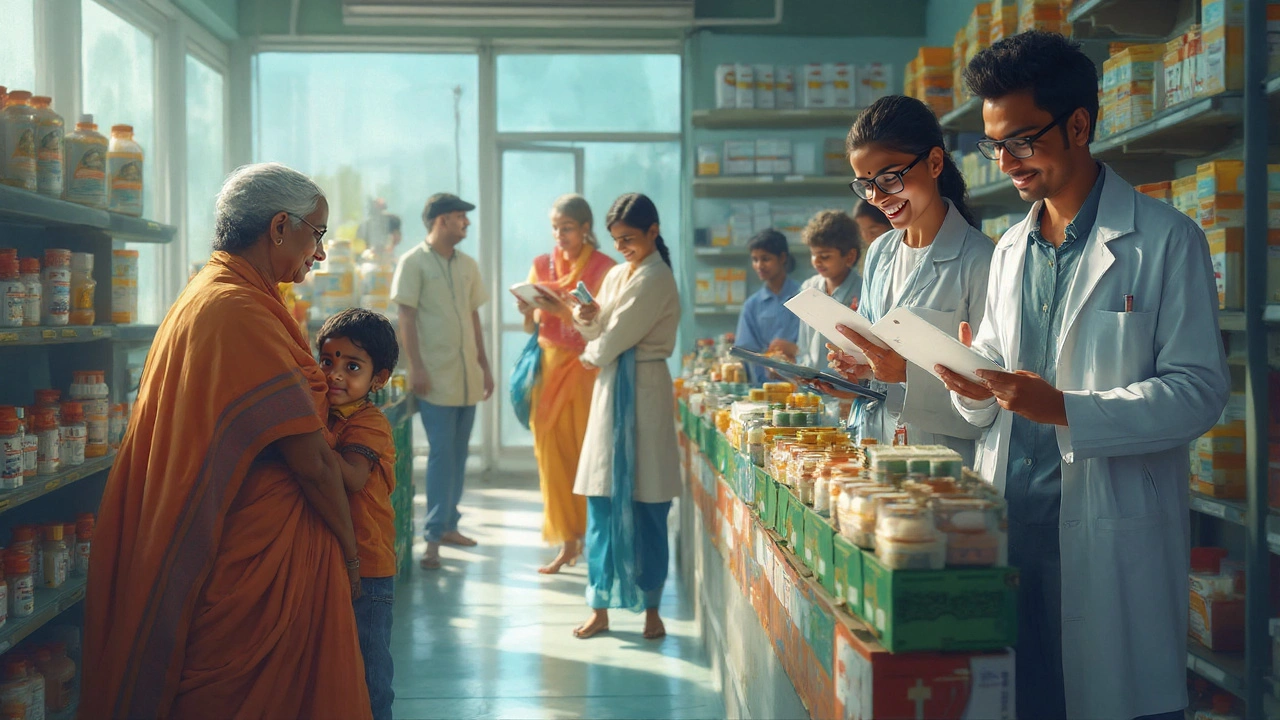Picture this: It’s 2025, and getting real, Indian pharmacies are not what they used to be. Glittery medical stores at every street corner? Sure, they’re still hanging around. But behind the counters, technology is changing the play, and the entire future of pharmacy in India looks nothing like the old chemist-and-cashbox routine. More than 1.3 million registered pharmacists now serve a population gearing up to hit 1.5 billion—huge, right? But here’s the twist: as health-tech, AI, and online medicine boom, being a pharmacy pro means a lot more than counting pills. The country’s appetite for quality healthcare is growing daily, and pharmacies are right in the center of that hunger—both in cities and in villages craving reliable medicine. Want an industry where social impact, science, and future-proof skills all collide? Pharmacy screams opportunity and challenge—sometimes in the same breath.
How Traditional Pharmacy is Evolving: Tech, Roles, and Reach
Step into any modern Indian pharmacy and you’ll spot buzzwords like “digital inventory,” QR-code scanning, and even AI-driven patient counseling. Yeah, tech isn’t just for the big hospitals. Fifty years ago, a pharmacist’s job was seen as a backup for those who missed out on medical school. Fast forward to right now, and the whole scene has flipped. The All India Organization of Chemists & Druggists (AIOCD) reckons brick-and-mortar pharmacy now faces stiff competition: e-pharmacies (the likes of PharmEasy, Netmeds, and 1mg) have already snapped up roughly 15% of India’s retail medicines market. These online players push for better customer data, follow-up reminders, real-time stock updates, and even doorstep deliveries deep into rural pockets. For the old-school pharmacist, tech mastery is a must, not just nice-to-have.
But there's more—telemedicine services need pharmacy support, too. Picture a doctor prescribing online, a pharmacist counseling a patient over a video call, and the medicine delivered same day—smooth, but only if the pharmacy back-end is digitized. Also, AI’s not just chatter. A Hyderabad-based company recently used a chatbot to flag risky drug combinations for over 30,000 prescriptions during a beta test. Pharmacists now need to learn basics of data privacy, digital communication, and health tech regulations—meaning pharmacy colleges are cramming in new courses on informatics, digital records, and even basic coding. The old image of pharmacists just selling pills? It's fading. Now, they’re part drug counselor, part techie, part public health guide.
Here's another detail: the scope of practice is broadening. Pharmacists are no longer just salespeople; they're now immunizers (especially after COVID), chronic care managers, and even primary health advisors in Tier 2 and 3 towns. India’s Health Ministry, in 2024, gave its nod to training pharmacists for basic screening—blood pressure, sugar checks, and even remote patient monitoring. Plus, government insurance drives like Ayushman Bharat need pharmacists to counsel cardholders on medicine use, chronic conditions, and follow-ups. The line between healthcare provider and medicine dispenser is blurring fast, and that opens up roles you couldn’t dream of a decade back.

Education, Jobs, and Up-Skilling: What Future Pharmacists Need To Know
Getting into pharmacy was once all about acing an entrance exam, spending 4 years, and finding a job at a local store. Not anymore. As per Pharmacy Council of India, over 1,300 colleges churn out about 200,000 B.Pharm graduates each year—far more than the classic retail jobs can soak up. So where are all these folks headed? Well, the manufacturing sector—India is the world’s third-largest pharma producer by volume—gobbles up a big chunk. The rest scatter between R&D, hospitals, regulatory bodies, online health platforms, and pharma sales. Here’s where it gets tricky though: employers now want a flexible, tech-savvy, and regulation-aware pharmacist, not someone just good at remembering dosages.
New education models are stepping up. Leading colleges—think Manipal, Jamia Hamdard, or BITS Pilani—now offer electives on AI in healthcare, pharma data management, and patient-centric care. They’re even collaborating with tech startups for specialized student-training programs. Internships aren’t just about shadowing the local chemist anymore; they may now involve stints at healthcare analytics firms, online prescription platforms, or vaccine distribution networks. So, if you’re thinking pharmacy is a “safe” profession—sure, but only if you up-skill for industry trends. Those who double down on digital skills, patient communication, and regulatory know-how will move up fast.
The hospital pharmacy scene is also heating up. With almost 70% of medical expenses in India used for medicines (way above the global average, according to the National Health Accounts 2024), there’s pressure for hospitals to offer accurate, error-free pharmacy services. Clinical pharmacy—where pharmacists work directly with doctors, review patient medications, prevent drug errors—is growing, especially in private multispecialty hospitals. Government focus on “drug safety,” through the Pharmacovigilance Programme of India, means more jobs for folks who love the science and geeky details of side-effects, adverse reactions, and real-world drug monitoring. Some of the best-paying jobs now cluster around regulatory affairs, quality assurance, medical writing, and pharma analytics.
| Pharmacy Job Sector | Typical Starting Salary (INR/Month, 2025) | Key Skills Required |
|---|---|---|
| Retail/Community Pharmacy | 18,000 – 28,000 | Communication, sales, digital billing |
| Hospital/Clinical Pharmacy | 28,000 – 45,000 | Clinical knowledge, patient care, teamwork |
| Pharma Manufacturing | 30,000 – 50,000 | GMP, quality control, production |
| Regulatory Affairs | 40,000 – 60,000 | Regulations, documentation, compliance |
| Pharma Analytics/Health Tech | 35,000 – 55,000 | Data analysis, tech tools, critical thinking |
A practical tip for freshers: Don’t ignore language skills. India is multi-lingual, and more employers will pay a premium for those who can counsel patients in both English and a local language. And here’s a bit of wisdom from a December 2024 TEDxGateway talk by Dr. Chetan Tandon, a respected pharma educator:
“For Indian pharmacists, the degree is just entry. Skills, adaptability, and the courage to learn new roles decide your future.”
It’s not too early to start. Look up free online courses in pharmacy informatics, medical AI basics, or pharma marketing—even a few hours on YouTube or Coursera can give you an edge in interviews. Stay curious; the most successful Indian pharmacists of this decade will be those who keep learning, not those who stick to old playbooks.

India’s Pharma Industry: Market Boom, Policy Shifts, and What’s Next
India’s pharma industry is flexing some serious muscle. The Indian Pharmaceutical Alliance revealed that the country's pharma exports touched $30 billion in 2024, ranking just behind the US and China globally. With that comes both pride and pressure: India is known as “the pharmacy of the world,” supplying 60% of global vaccine demand and almost 40% of generic medicines in the US. This scale-up brings opportunity not just in manufacturing, but in logistics, quality checks, international regulations, and bioinformatics. But hey, growth comes with bumps. The rise of e-pharmacy platforms has forced the government to update rules almost every year; data privacy, medicine authenticity, and patient safety are the latest battlefields.
Take the overhaul of the Drugs and Cosmetics Act that happened in September 2024. Now, every pharmacy—physical or online—must maintain a digital log of sales, including doctor prescription images, medicine batch numbers, and expiry details. This alone makes knowing your way around digital tools non-negotiable. If you dream of running your own chain, you’ll need a hang of e-inventory systems, online customer care, and regulatory red tape. Government plans like the Production-Linked Incentive (PLI) Scheme continue to push investment in domestic API (Active Pharmaceutical Ingredients) plants, which might double high-skilled pharma manufacturing jobs by 2030. Climate concerns aren’t ignored either; “green chemistry” methods in drug manufacturing are being promoted, and ESG compliance now matters in pharma funding deals.
Rural reach has become a race, thanks to telehealth and last-mile delivery startups. Reports from FICCI and NITI Aayog show that 30% of rural prescriptions in 2025 are now filled through hybrid (part-physical, part-digital) pharmacy setups. What does this mean in daily life? If you know your tech and local language, you’ll get hired to set up, run, or supervise rural medicine points—sometimes with a scooter, a solar charger, and a WiFi dongle! Even in hardcore manufacturing, automation, AI QC (quality control), and robotic packaging are the new norm, so don’t shy away from STEM up-skilling. Women are joining in higher numbers, too—over 60% of B.Pharm students at top colleges in 2024 were women, pushing fresh changes in workplace attitudes and leadership roles in pharma.
The future isn’t without headaches. Fake medicines, data theft, pharmacist burnout, and the constant pressure to update skills are real. Tech can help, but only if you know what to do with it. Still, as the world hunts for affordable, safe healthcare, Indian pharmacies will stay essential—even if the day-to-day looks wildly different in five years than right now. Those ready to learn fast, adapt, and stay customer-focused will be the ones who thrive. Pharmacy in India is changing fast, but the need for smart and passionate professionals is only growing. Ready for the challenge?
